Balancing species, ecosystem, and water resource needs during drought
Summary:
Streams that flow for only parts of the year, known as intermittent streams, are common throughout the world. In California, intermittent streams are important breeding habitat for Pacific salmon and trout, but are also vulnerable to reduced flows due to water withdrawals. Although many species that live in intermittent streams have adaptations that allow them to persist through drought, the limits of these adaptations will be tested with increased societal demands for water and by a changing climate. In many watersheds in California, farmers and conservationists are working side-by-side to conserve winter rainfall in off-channel ponds to enhance dry season habitat for salmonids. However, stream flow targets to guide successful project implementation are lacking; we addressed these knowledge gaps by quantifying flow and habitat needs. The results provide a major step towards providing managers with flow targets to support aquatic biodiversity, including Pacific salmon, during drought.
Investigator:
Stephanie Carlson
Assistant Professor
University of California, Berkeley
Project description:
Climate change and water withdrawals pose grave threats to stream biodiversity in arid and semi-arid regions across the world. Streams in arid regions are essential sources of municipal and agricultural water, but they also support diverse, complex natural communities. Although many species in arid areas have adaptations allowing them to persist through drought, the limits of these adaptations will be tested with increased societal demands for freshwater and the intensifying droughts predicted by climate models.
Intermittent streams, which cease flowing during some portion of the year, comprise the majority of stream length in the United States but have only recently received significant scientific attention. In California, intermittent streams represent important breeding habitat for Pacific salmon and trout, but these small streams are particularly vulnerable to flow decreases due to water withdrawals. Innovative water conservation strategies are being implemented in some areas in an effort to balance competing demands for freshwater. In these watersheds, farmers and conservationists are working side-by-side to conserve winter rainfall in off-channel ponds in order to enhance summer dry season habitat for salmonids. However, flow targets to guide successful project implementation are lacking. These basic knowledge gaps are hampering our ability to design, implement, and evaluate the ecological benefits of water conservation projects.
In this project, we are addressing these knowledge gaps by quantifying (1) low flow attributes across a diversity of stream sizes from intermittent headwater tributaries to mainstem perennial streams (including reaches with agricultural diversions and or water conservation projects), (2) the effect of flow intermittency and dry season habitat contraction on aquatic biodiversity and community composition, and (3) the effect of habitat contraction on salmonid distribution and dry season survival.
We are using a combination of hydrological modeling and field studies in the Pine Gulch basin, Marin County, California, to address our three main study questions. This research will include both a broad-scale, short-term study of 20 tributary streams with varied flow regimes (perennial to severely intermittent) and a fine-scale, longer-term study of salmonid population and invertebrate community dynamics in individual stream pools across the dry season. Pine Gulch is an ideal basin for quantifying the ecological impacts of low- and zero-flow events because those data will be immediately used in an innovative water resource management program. The Pine Gulch Watershed Enhancement Project is a multi-year project, supported by multiple state and federal agencies, where local farms are constructing ponds for winter rain storage with the hope of reducing summer flow diversions and enhancing salmonid habitat. Our research will provide guidelines for the water levels necessary to sustain biotic diversity and salmonid production in this basin. The approach and results of this collaboration could serve as a model for managing streams to meet both ecosystem and societal needs in California and beyond.
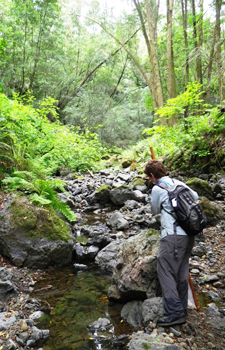
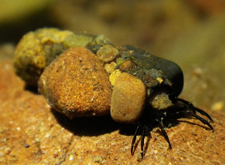
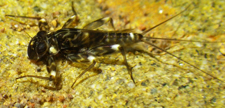
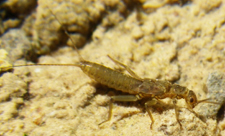
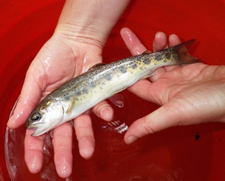
Photos by Mike Bogan
